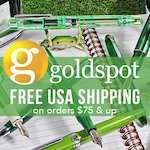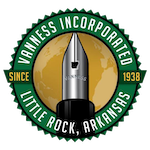The amount of Japanese office supplies I have on my desk at any one time is astounding. In a good way, mind you. Here are the items I had within arms reach just yesterday as I was deciding what to write about today.
Highly Recommended
Kokuyo AiroFit Non-Stick Scissors - The best scissors I have ever used, hands down. Granted, my scissor experience is on the light end, but these cut better than anything I’ve bought at an American office supply store. The older model I have has a slightly different blade shape, but the AiroFit handle is the same. They are so sharp you need to pay close attention when using them.
Life Vermilion Notebook A6 Graph - The Life brand gets paper right, and this A6 graph notebook is no exception. Life’s larger notebooks can be on the pricey side, but the small models are downright cheap compared to their competitors. The paper handles any ink or graphite you can throw at it, and the threaded binding and red grid are right up my alley.
Recommended
Raymay Easy to See Grid Ruler - I don’t use rulers every day but I always have one handy when needed. Most small plastic rulers feel cheap and flimsy, but this Raymay model is thick and strong with a nice sharp edge.
Pilot Hi-Tec-C Gel Pen with Grip 0.3 mm Black - I use a lot of Pilot Hi-Tec-C pens, but the 0.3 mm black model with rubber grip is THE Pilot Hi-Tec-C for me. The only thing keeping it from the list above is that it is a finicky pen. On occasions, it will not write consistently without being primed, but once it gets going there is no better fine tip gel pen on the market.
Avoid
Sonic Ratchetta One Pencil Sharpener - Great ideas and a good design doesn’t always make for a great product. The idea of a ratcheting pencil sharpener is great, and this Sonic model looks cool, but the end result on the pencil is not good. It is uneven, messy, and the ratchet doesn’t give you any indication on when to stop. Skip this one.
Correct Joho Index Cards - Another good idea. Another bad execution. These cards are barely thicker than a standard sheet of paper and have a glossy coating as if you were writing on a magazine page. The grid is only printed on one side as well. Bad all the way around.
Uni Mitsubishi 9850 Pencil - Unlike the two products above it, the 9850 isn’t bad, there are just better options. The Tombow 2558 for starters. The 9850 doesn’t have the point retention or aesthetic that keeps me coming back for more.
The Rest
While you can no longer get the exact Owl Magnetic Bookmarks, MT Washi Tape, and Pencil Caps I have in the picture above, you can get pretty close. I keep washi tape handy to mark cables and cords, not necessarily to add to a journal or notebook. And pencil caps have become a mandatory accessory for me. I don’t have much need for the bookmarks though.
(JetPens provided this product at no charge to The Pen Addict for review purposes.)




















